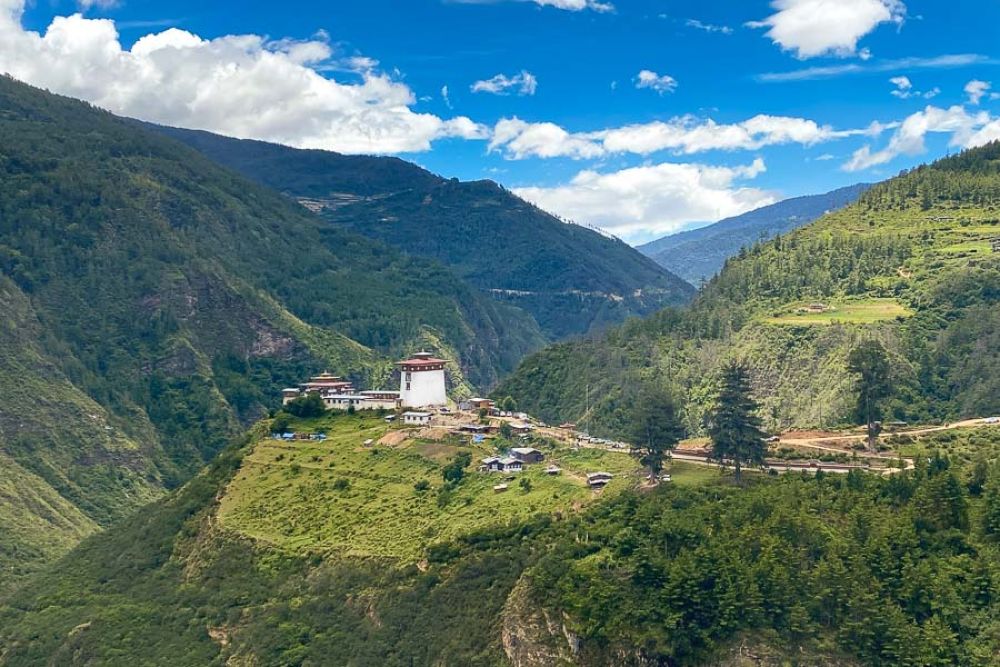

Visiting Dobji Dzong, a historic fortress located in Paro, Bhutan, is best experienced during the spring months of March to May or during the fall from September to November. These months offer the most pleasant weather conditions, with mild temperatures and minimal rainfall, which is optimal for exploring the ancient structure and enjoying the scenic beauty of its surrounding landscapes. Spring brings out the vibrant blossoms, including the famous rhododendrons, adding a splash of color to the landscape. Similarly, autumn provides clear skies and comfortable temperatures for visitors, while the fall foliage presents a spectacular display of autumnal colors. During these seasons, Dobji Dzong's rich history and architectural splendor can be appreciated fully under the comfortable weather conditions.
However, it is important for visitors to avoid the monsoon season from June to August due to heavy rains that can make the steep routes leading to the dzong slippery and challenging to navigate. Likewise, the winter months from December to February are often too cold for comfortable travel, and the higher elevation of Paro could result in snow, which might restrict access to some areas around Dobji Dzong. When planning your visit, it is also advisable to check for local festivals and events that might coincide with your travel dates; these occasions can offer an enriching cultural experience and a deeper glimpse into Bhutanese traditions and customs.
| Month | Min Temp | Max Temp |
|---|---|---|
| January | 5 °c | 10 °c |
| February | 6 °c | 13 °c |
| March | 10 °c | 18 °c |
| April | 12 °c | 20 °c |
| May | 15 °c | 23 °c |
| June | 18 °c | 25 °c |
| July | 18 °c | 27 °c |
| August | 18 °c | 25 °c |
| September | 17 °c | 23 °c |
| October | 12 °c | 21 °c |
| November | 9 °c | 17 °c |
| December | 6 °c | 13 °c |